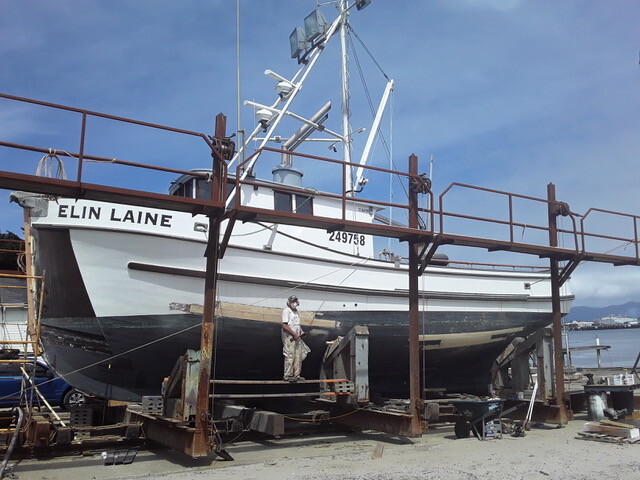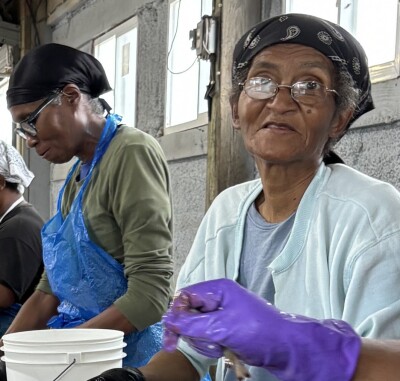When you are a fisherman on the West Coast, if your old wooden boat is in tough shape or just aging, the first thought for a lot of boat owners wanting to maintain their vessel’s seaworthiness is often shipwright David Peterson.
Peterson, who focuses almost entirely on repairing wooden commercial fishing boats from Southern California to Alaska, works out of Zerlang & Zerlang Marine Services, Samoa, Calif., across Humboldt Bay from Eureka.
This past spring, Peterson finished repairs on the Elin Laine, a troller and crabber built in 1946 and based in Fort Bragg, Calif. Peterson describes the Elin Laine as “in great shape. The owner keeps it immaculate. One of the nicest boats on the coast.” Still, the 79-year-old vessel needed planks and ribs and a stainless steel bow iron on the front of the stem.
The plank seams were widening and some of the Douglas fir planks were “just in poor condition” with spots of rot above the waterline. “The owner just says, do what she needs,” remembers Peterson. “So I ripped the whole planks out.”
Peterson replaced five Douglas fir planks, three in the back and two towards the bow with Alaska yellow cedar planks. Ten oak ribs in the back of the hull were also removed and replaced with laminated yellow cedar ribs.
Some readers might question the use of laminated cedar ribs instead of solid oak ribs. But Peterson explains: “When the rib is laminated with 1/8-inch laminates it changes the continuity of the frame; it turns it into a harder rib, and they are a pretty dense rib because of the glue.” The planks were fastened in place with 3-inch stainless screws.
Most recently, Peterson worked on the Sangria, a 28’ x 9’ Monterey Clipper out of Eureka, Calif., that trolls for black cod and salmon. The Monterey Clipper design was introduced around 1925, and about 500 of the boats were once based in San Francisco. The boat Peterson was working on was launched in 1928 in Capitola, Calif.
At 28 feet, “it sounds small,” says Peterson, “but it's not that bad for a Monterey. The owner sleeps on it with a bunk and a little stove.” The problem was that the stem’s cutwater had been damaged and needed to be replaced.
People asked Peterson if he’s the only person doing this kind of repair work to older wooden boats. He says, “When I shut my saw off, I don’t hear another saw, that’s for damn sure. I’m the only one in the port of Eureka and boats from Coose Bay (Oregon) come down here. That’s almost 1,000 miles.”







